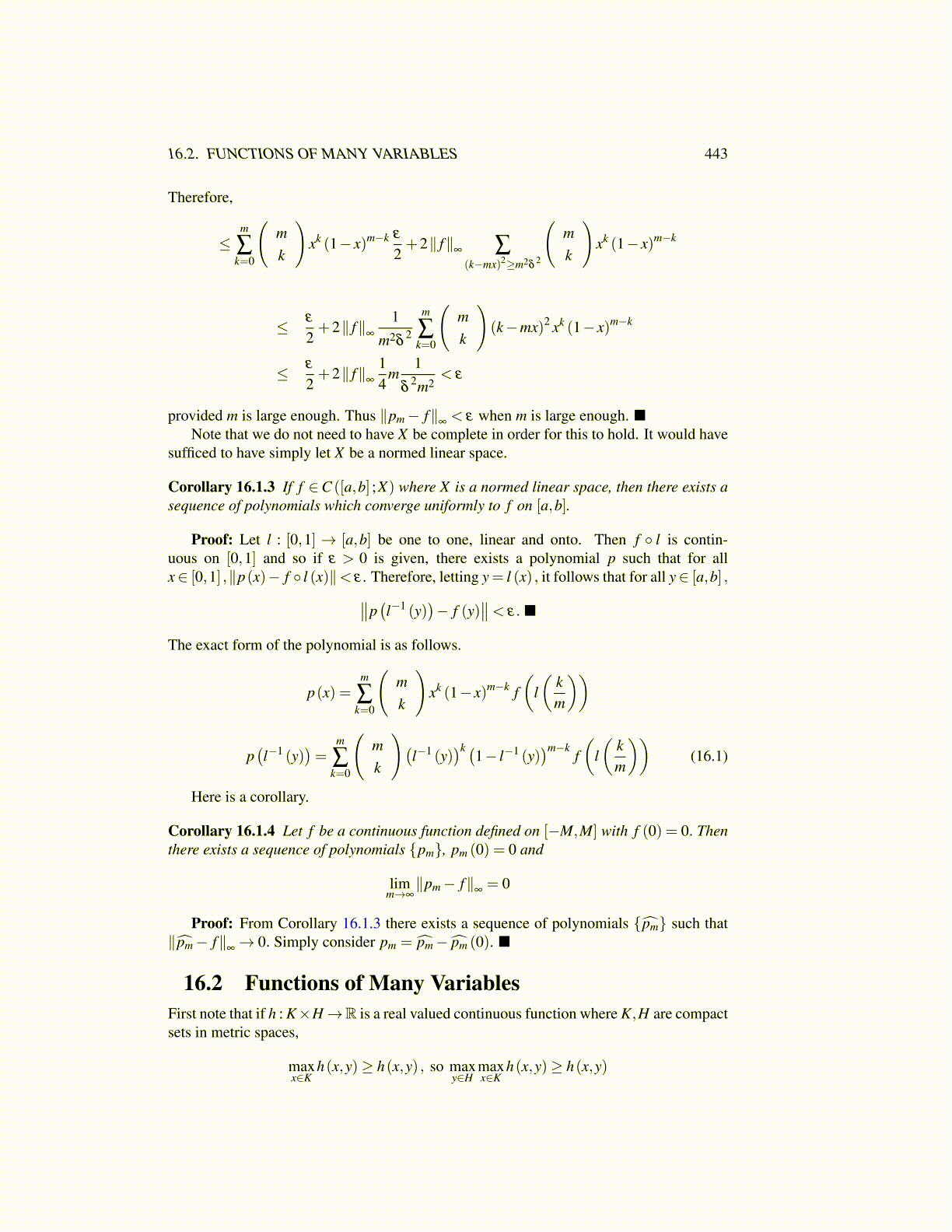
16.2. FUNCTIONS OF MANY VARIABLES 443
Therefore,
≤m
∑k=0
(mk
)xk (1− x)m−k ε
2+2∥ f∥
∞ ∑(k−mx)2≥m2δ
2
(mk
)xk (1− x)m−k
≤ ε
2+2∥ f∥
∞
1
m2δ2
m
∑k=0
(mk
)(k−mx)2 xk (1− x)m−k
≤ ε
2+2∥ f∥
∞
14
m1
δ2m2
< ε
provided m is large enough. Thus ∥pm− f∥∞< ε when m is large enough. ■
Note that we do not need to have X be complete in order for this to hold. It would havesufficed to have simply let X be a normed linear space.
Corollary 16.1.3 If f ∈C ([a,b] ;X) where X is a normed linear space, then there exists asequence of polynomials which converge uniformly to f on [a,b].
Proof: Let l : [0,1] → [a,b] be one to one, linear and onto. Then f ◦ l is contin-uous on [0,1] and so if ε > 0 is given, there exists a polynomial p such that for allx∈ [0,1] ,∥p(x)− f ◦ l (x)∥< ε . Therefore, letting y= l (x) , it follows that for all y∈ [a,b] ,∥∥p
(l−1 (y)
)− f (y)
∥∥< ε. ■
The exact form of the polynomial is as follows.
p(x) =m
∑k=0
(mk
)xk (1− x)m−k f
(l(
km
))
p(l−1 (y)
)=
m
∑k=0
(mk
)(l−1 (y)
)k (1− l−1 (y)
)m−kf(
l(
km
))(16.1)
Here is a corollary.
Corollary 16.1.4 Let f be a continuous function defined on [−M,M] with f (0) = 0. Thenthere exists a sequence of polynomials {pm}, pm (0) = 0 and
limm→∞∥pm− f∥
∞= 0
Proof: From Corollary 16.1.3 there exists a sequence of polynomials { p̂m} such that∥ p̂m− f∥
∞→ 0. Simply consider pm = p̂m− p̂m (0). ■
16.2 Functions of Many VariablesFirst note that if h : K×H→R is a real valued continuous function where K,H are compactsets in metric spaces,
maxx∈K
h(x,y)≥ h(x,y) , so maxy∈H
maxx∈K
h(x,y)≥ h(x,y)